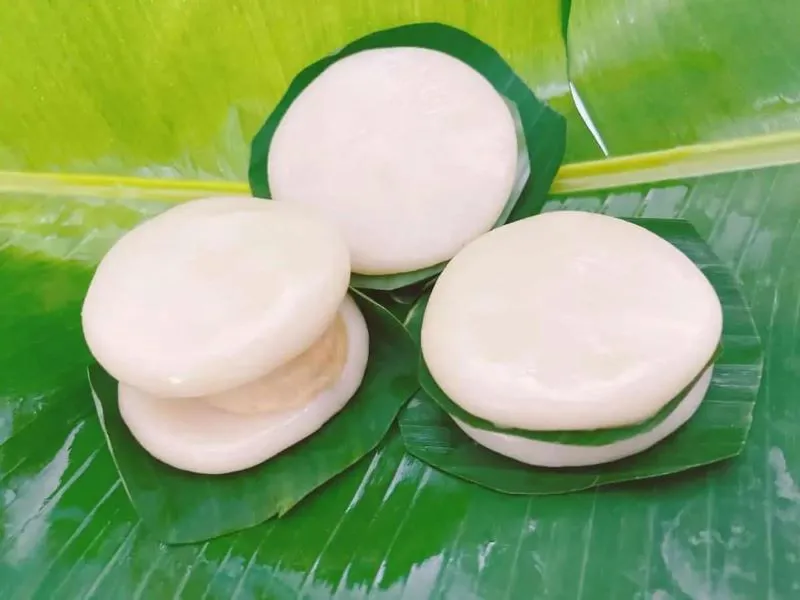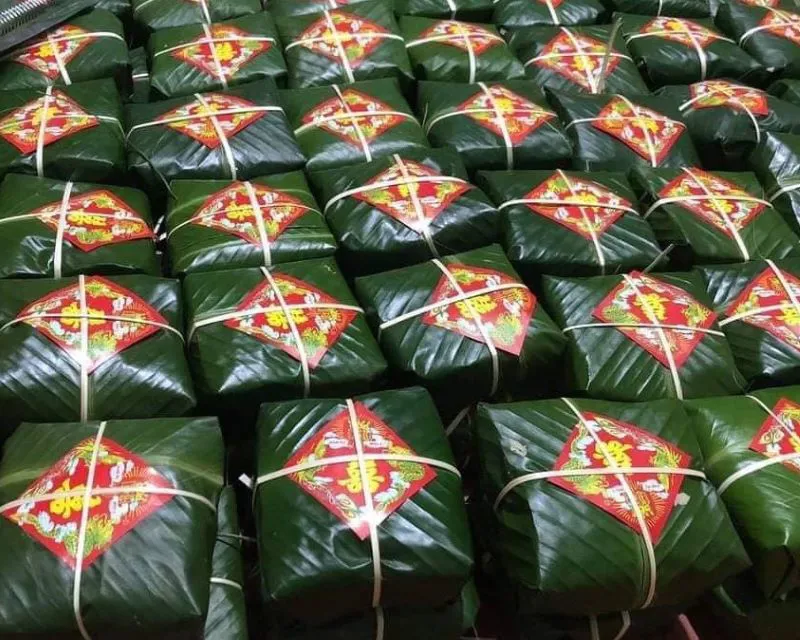Quan Ganh Banh Day: Rustic snack of Hanoi
Hanoi's simple yet delicious specialty requires attention to detail, meticulousness, experience, and family secrets.
For generations, banh day or sticky rice cake from Quan Ganh Street in Hanoi's suburban district of Thuong Tin, has been known to tourists from near and far for its fragrance, soft texture, and unique flavor. Once you taste it, you will never forget it.
| The Vietnamese rice sandwich may look simple, but making a tasty one requires meticulousness, great care, and hygiene from the cook. Photo: Sammy Nguyen |
Quan Ganh Banh Day is such an established trademark that it even has an introductory poem:
“Whoever forsaken by their spouse
Quan Ganh Banh Day brings about a reunion
Eat first and tell others
Elders grow young again. Girls quickly attract suitors.”
Since time immemorial, two native glutinous rice cakes, banh day and banh chung, have symbolized heaven and earth for the ancient Vietnamese people. Accordingly, the former is white, round and flat, while the latter is green, square, and thick, both imbued with the colors of the Vietnamese countryside.
Today, the roadside of the old National Highway 1A section through Nhi Khe Commune, Thuong Tin District, is the land of Banh Day (Vietnamese rice sandwich), where passersby come across a line of street vendors selling this specialty cake, each with a brand, most of whom come from the old Quan Ganh Street in Thuong Dinh Village.
Tucked behind the village gate, a few dozen meters from National Road 1, Thuong Dinh Village in Nhi Khe Commune is a pilgrimage site for delicious banh day devotees. For the locals here, the pounding of mortars is a daily rhythm of life, as cooks pound rice at midnight or dawn - when the roosters crow.
| An essential dish at northern Vietnamese festivals. |
A portion of banh day usually consisted of six pieces wrapped in two green la dong or S. placentarium leaves, tied with a pink ribbon and bearing a striking red stamp with the phrase 'Van su nhu y' or 'A myriad of things go as intended'. A batch of sticky rice cakes is the result of a multi-step process. Each step requires the cook's attention to detail, meticulousness, experience, and family secrets.
Truong Thi Hien,60, a well-known banh day maker in Thuong Dinh Village, shared her tips, saying: "If you want a soft, fragrant crust that won't harden, you must choose uniform Nep Cai Hoa Vang or yellow-flowered sticky rice grains and pound them thoroughly until they are white and smooth. The mung bean stuffing must be well seasoned. The la dong used for wrapping must be washed and dried so it doesn't get moldy. In particular, banh day should only be used during the day; if left until the next day, the bean filling and sticky rice crust will easily make the cake sour or 'fall off.'
| Banh Day filled with mung beans. |
To have delicious batches during the day, the cooks here often have to get up between 1 and 2 in the morning to wash rice and mung beans. Before the rice is steamed, it is carefully sifted to ensure that the grains are evenly sized and free of grit. When the rice is almost cooked, it is sprinkled with a little warm water so that it is cooked evenly and has an aroma. It is then put into a mortar and pounded into a thick, white dough.
Quan Ganh Banh Day comes in three flavors: plain, sweet, and savory. Plain banh day has no filling and is often served with pork bologna or sweet soup. Sweet banh day is stuffed with mung beans that have been boiled, pounded, and stir-fried with sugar and shredded coconut. Savory banh day is stuffed with steamed mung beans, crushed and mixed with ground pepper, lard, and spicy giant water bug, giving it a unique flavor.
"At first, as a newcomer, I thought the savory banh day was filled with meat, but it wasn't. After eating it, I realized the filling was crushed mung beans mixed with fragrant pepper and lard. Whenever I have the opportunity to come here, I often buy all three types to take home for ancestral offerings and gifts," said Giang Dinh, a tourist from Ho Chi Minh City.
| The plain banh day has no filling and is often served with pork bologna. |
The exciting thing about Quan Ganh Banh Day is that the cake is not round but slightly elongated. If you are buying it for the first time, you might think there is only one large cake in the package, but there are six small pieces, wrapped in a la dong and tied with string. This is because a traditional Vietnamese dinner tray usually serves six people.
It may look simple, but the cook must be meticulous, careful, and hygienic to make a delicious cake. Above all, it contains absolutely no additives. If the cook is careless and doesn't make it clean, the white crust will immediately expose it. In addition, Quan Ganh Banh Day can only be kept during the day, from 5 a.m. to 10 p.m. If left in the fridge overnight, the cake may not spoil, but the crust will dry out, become stiff, and no longer taste good.
At present, about 20 households in Thuong Dinh Village make banh day, each selling about 60 packages a day, and more during holidays and Tet. A portion costs about VND25,000 (US$1).



.jpg)








